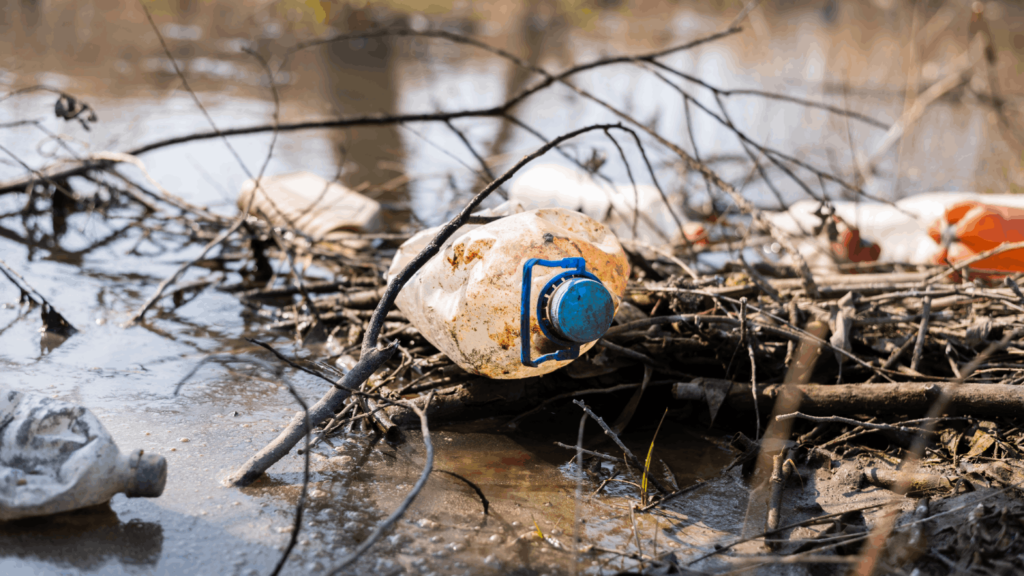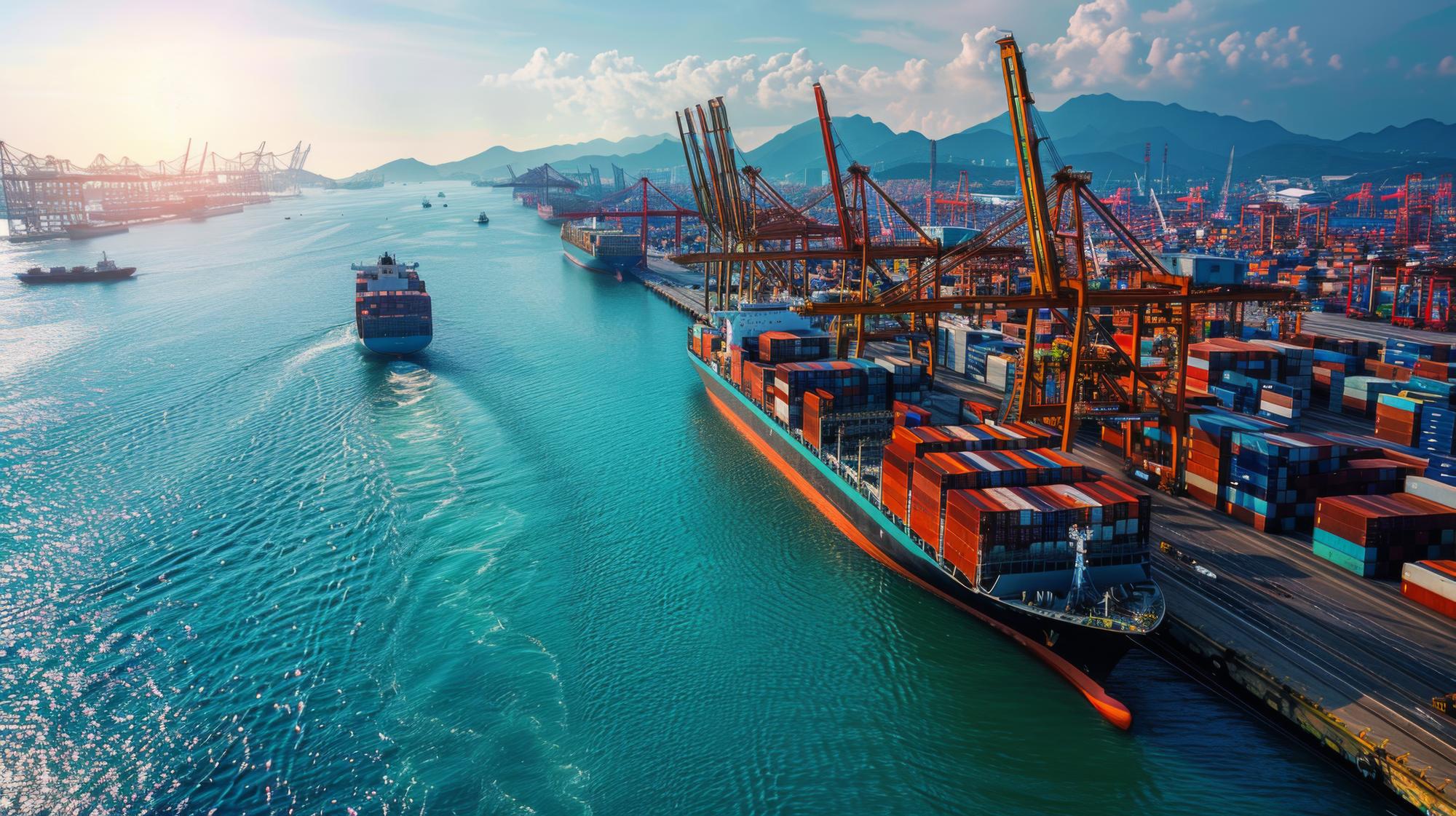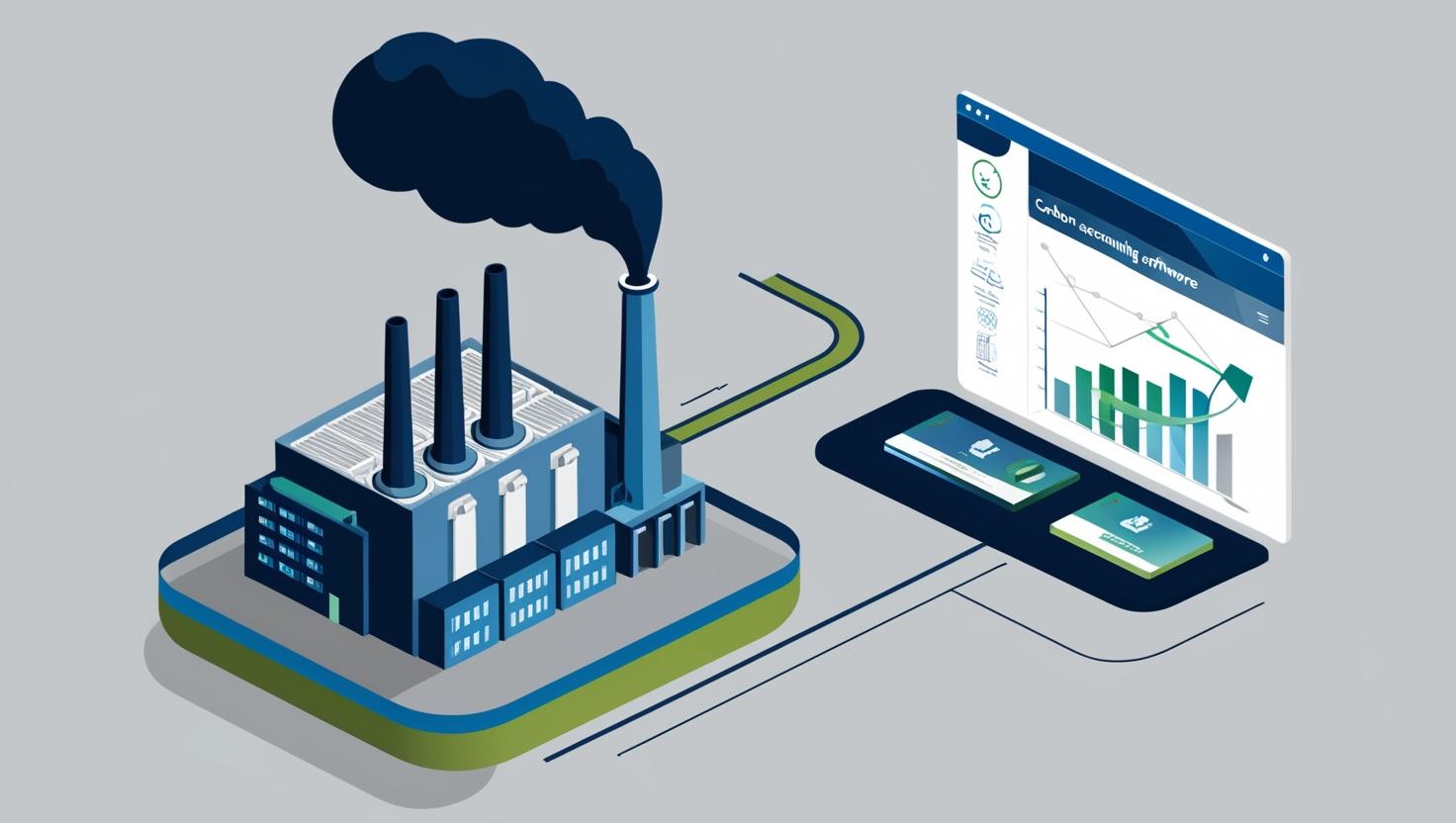Monitoring of wastewater parameters in a Common Effluent Treatment Plant is a challenging task due to the intake of wastes, having diverse properties & composition, from various industries.
Hence it is difficult to set boundary conditions on the measurement. UV/VIS spectroscopy is an efficient method for continuous monitoring.
This method is based on Beer-Lambert’s absorption law;
A= Ɛbc
where, ‘
- A’ is absorbance (no units, since A = log10 P0 / P)
- ‘Ɛ’ is the molar absorbtivity with units of L mol-1 cm-1
- ‘b’ is the path length of the sample – that is, the path length of the cuvette in which the sample is contained.
- ‘c’ is the concentration of the compound in solution, expressed in mol L-1.
Correlations between absorption and equivalent concentrations are calculated using Multivariate Linear Regression Analysis. These correlations if calculated for limited effluent matrices, environmental conditions & industrial operations will be insignificant to establish correct correlation as it does not allow understanding & evaluating complete dynamics & variability of different parameter concentrations. Hence, it is important to collect most of the wastewater information in the training set for the analyzer. Accuracy of the measurement showcases the efficacy & reliability of Real Spectrum Analyzer for application in Common Effluent Treatment Plants
2. Materials & Methods
An extraction based UV-VIS Spectrometer has been used for measurement of COD, BOD & TSS in PRIA Common Effluent Treatment Plant, Patalganga, Maharashtra.
The spectrometer analyzes the sample over a complete UV-VIS spectrum (200 – 750 nm), wavelengths being configurable on the field, with sample cell path length as 2mm. Deuterium & Tungsten light sources are used for the generation of ultraviolet & visible light, respectively. Deuterium light source is quite resistant to stray light for interfering with the measurements. The sensor uses just one photodiode for measurement regardless of how many wavelengths are used. For multiple & full spectrum scanning, a diffraction grating is rotated through the desired measurement wavelengths one at a time. The use of a single sensor design allows the realization of several optical measurement improvements & achieves a wavelength resolution down to 1nm.
The Real Spectrum Analyzer works on innovative Split-Sense Pro technology. It is designed to take measurement readings through water sample & reference readings through air. By continuously moving the sample cell from the test position between the lamp & sensor and outwards to allow for a reference reading, lamp readings are inherently compensated for by the measurement process itself, therefore improving accuracy.
An automatic pump/clean system is used for sample extraction & analyzer cleansing process; it is advantageous over other pumping systems as the effluent matrix remains unaffected to a large extend & it can be used to cleanse the sample lines in the reverse direction also for any blockages. However, peristaltic pumps are limited to a maximum vertical lift of about 10-12 ft.
The system utilizes automatic chemical cleaning technique to cleanse the sample cell & sample tubing, therefore enables choice of various cleaning fluids suitable for different industrial applications based on their wastewater composition. The cleaning mechanism is initiated on user-configured frequency besides a manual trigger.
Software Platform
The Sustainability Cloud is a cloud-based remote monitoring software platform on which data from field devices is collected.
It enables real-time monitoring & reporting of the data. Smart GPRS/LAN based Cloud connector is used to capture data from field devices.
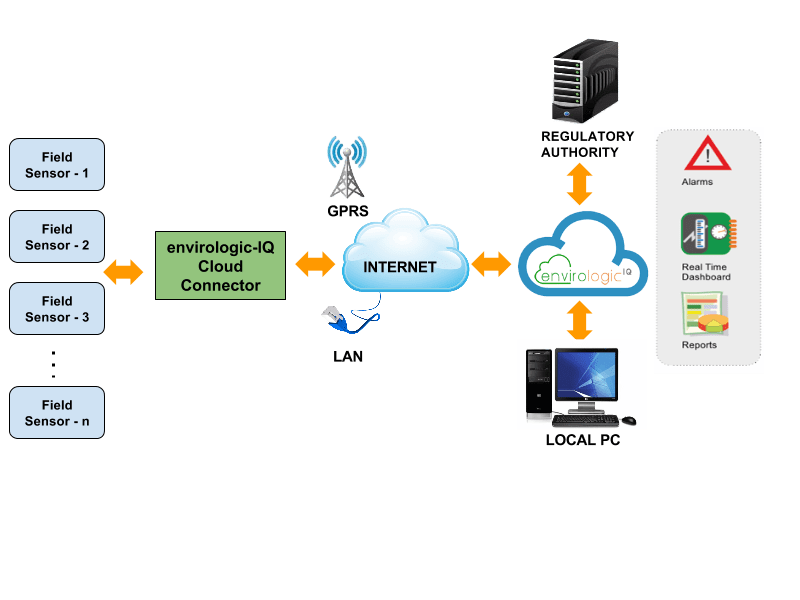
Intelligent alarm rules can be set for the field devices based on parameter readings enabling the user to take preventive measures to ensure proper observance of regulations. User management is well defined in the software so that authority is properly distributed among various stakeholders, besides proper maintenance of audit logs. Device management & diagnostics are built in the software for calibration, diagnosis & authentication of devices. Automatic alerts are generated in case devices are not working properly.
But as its name indicates, it’s not another effluent monitoring system in the market as it also helps in monitoring and managing energy resources and air quality in the environment.
Calibration
Two calibration methods exist for online analyzers, viz., Global Calibration & Local Calibration. Global calibration is the default calibration that is provided by the manufacturer from a similar plant type to get some readings in the beginning just after the installation. Global Calibrations do not have relevant weightage in measurement accuracy due to different composition of wastewaters. Even similar types of industry/plant may have a significant differences in their effluents due to various factors like weather conditions, industrial processes, etc. Therefore, Global calibrations only give a rough correlation between measured absorption and parameters of interest.
The local calibration is able to account for specific wastewater compositions and possible matrix effects. Provisioning to acquire sample data points over vast operational & environmental conditions, local calibration enhances measurement quality & accuracy.
Real Spectrum Analyzer is calibrated using Local Calibration procedure. For this purpose wastewater samples are physically collected from the plant & different parameters are determined by laboratory analysis using standard methods & procedures. For the case-study under discussion, eight samples were collected over a period of 5 days, (Table1) to get a training set for establishing best correlations for equivalent parameter measurements. On completion of laboratory analysis of samples, UVA data from the analyzer is downloaded onto an external storage device.
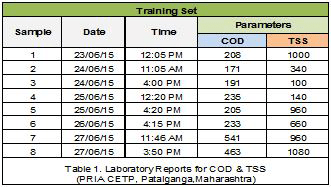
Spectra of measured absorbencies is correlated to laboratory results to achieve a correlation matrices for different parameters (COD, TSS, etc.) using statistical regression models expressed as;
Ceq = ∑ (λi . Αi) +K
with ‘n’ the number of used wavelength ‘λi’depending on the measuring system (for the case under study, n=390). The weighing factors ‘Ai’ are determined after fitting to laboratory analysis. The constant offset K can be used for the specific wastewater matrix adjustment over all single wavelengths. Every calibration model results from a compromise between generality and robustness. Usually, particularities in calibration data can be better reproduced by increasing the value of ‘n’. Therefore, minor deviations between calculated equivalence values and laboratory values can be determined.
2. Operational Experiences
After carrying out the local calibration, correlations were fed into the system. The spectrometer worked absolutely fine for first two days of operation. The results of spectrometer & laboratory analysis are compared as in Table 2.
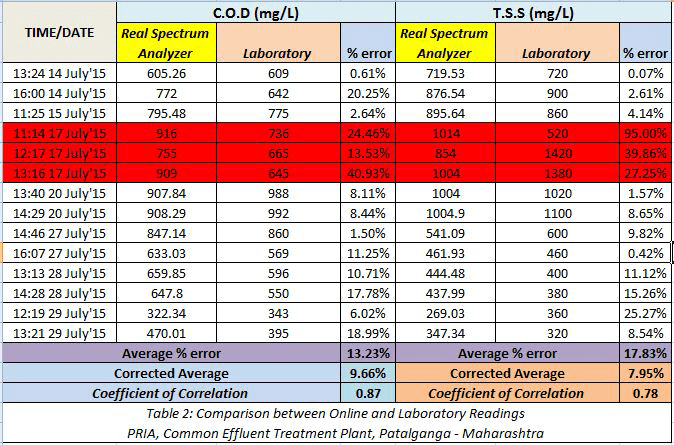
A tremendous overshoot in readings of different parameters happened on 17th July. A detailed site and instrument study was carried out to find the reason for this abrupt change. Primary reason was found to be the heavy rainfall that happened. Since the effluent is collected in an open tank before pumping out, rains increased the component of suspended solids. Second reason was the fouling of flow cell that occurred due to unsuitable cleaning frequency set for automatic cleaning. Frequency was set to 12 hour; however the recommended cleaning frequency for a common effluent treatment plant is 3 – 4 hours due to high concentration of fouling agents. Third reason was found to be the improper working of oven in the laboratory that consequently added to error in readings.
With another unit installed in a CETP at Ahmadabad, Gujarat we faced a challenge for measuring TSS with visible spectrum method as the effluent mainly consisted of wastes from pharmaceutical, textile and dye industries. Therefore, sensor based on IR 90º Scattering principle was used to measure the TSS accurately. Also, training set for the instrument needs to cover vast operational changes for better accuracy of COD & BOD measurements.
3. Results & Discussion
It is of high importance to investigate whole concentration range to get reliable absorbance-concentration correlation for the system to produce accurate results. Plot 1 shows laboratory concentration of Chemical Oxygen Demand & its equivalent online reading.
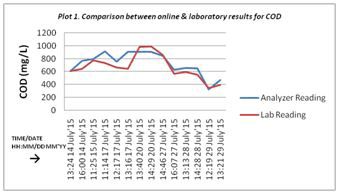
After local calibration and adjustment work based on taken reference laboratory samples, the deviations produced by Global calibration could be reduced. Investigating whole concentration range to get reliable absorbance-concentration correlation for the system is therefore important if high accuracy of the spectrometer equivalent values is needed. However, the dry wastewater matrix adjusted local calibrations does not inevitably deliver reliable data during wet weather conditions due to the different composition of wastewater.
For long-term effective operation, cleaning systems are necessary for the spectrometer itself to prevent measurement drift due to accumulation of waste material on the measurement optics and for the channel & tubing to prevent sedimentation & blockages.
Plot 2. depicts the online & laboratory readings for Total Suspended Solids.
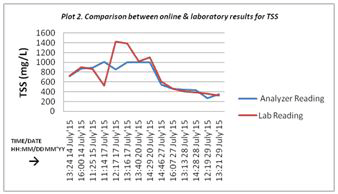
The cited results demonstrate the practicability of UV/VIS analyzers for online effluent monitoring as the equivalent concentrations for the parameter COD and TSS measured by the UV/VIS spectrometer are reliable & accurate.

